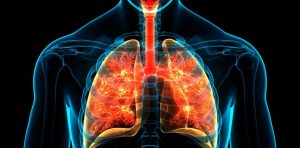Sarcoidosis is a condition that involves the growth of inflammatory cells called granulomas. These can form in any part of the body but are most commonly formed in the lungs and lymph nodes of the chest (accounting for up to 90% of cases). It is uncertain what causes these growths to appear, however it is important to note that they are not cancerous.
Symptoms
The symptoms of sarcoidosis vary significantly depending on the affected organs. Additionally, they may gradually appear and worsen or may appear suddenly and relieve quickly. Symptoms generally include:
- Cough
- Fever
- Chest pain or discomfort
- Shortness of breath
- Tiredness and lethargy
- Facial swelling
- Arthritis, particularly of the large joints
- Painful red lumps called erythema nodosum on the front of the legs.
Treatment
There is no specific cure or treatment for sarcoidosis, this will range depending on the severity and duration of the condition. For mild cases this condition may resolve itself. However, in more severe cases further treatment may be required. Medications such as corticosteroids, anti-inflammatories and immune suppressing drugs may be utilised. These will all be individualised depending on the areas that are impacted.
Benefits of Exercise
Exercise may be a powerful tool in the treatment, management, and recovery of those who suffer sarcoidosis. Although exercise itself will not cure the condition, it may significantly assist with the associated symptoms including fatigue, joint pain and shortness of breath. Exercise will assist in strengthening bones, increasing muscle strength and improve joint mobility. Improvements in cardiorespiratory fitness and specific breathing exercise may also assist in reducing fatigue and breathlessness experienced.
If you would like further information about safe individualised exercise advice speak with an Accredited Exercise Physiologist.




